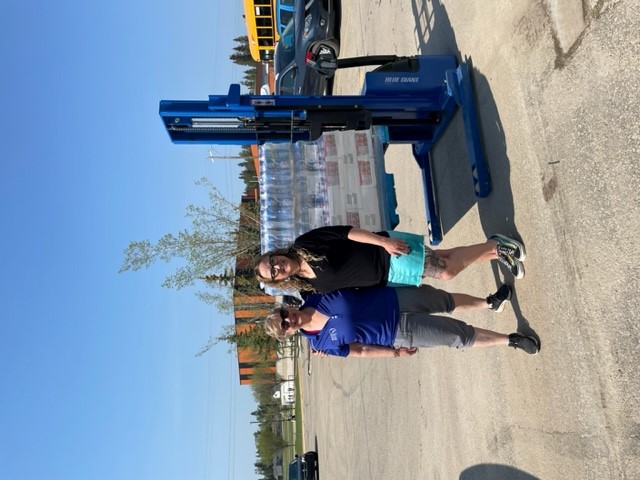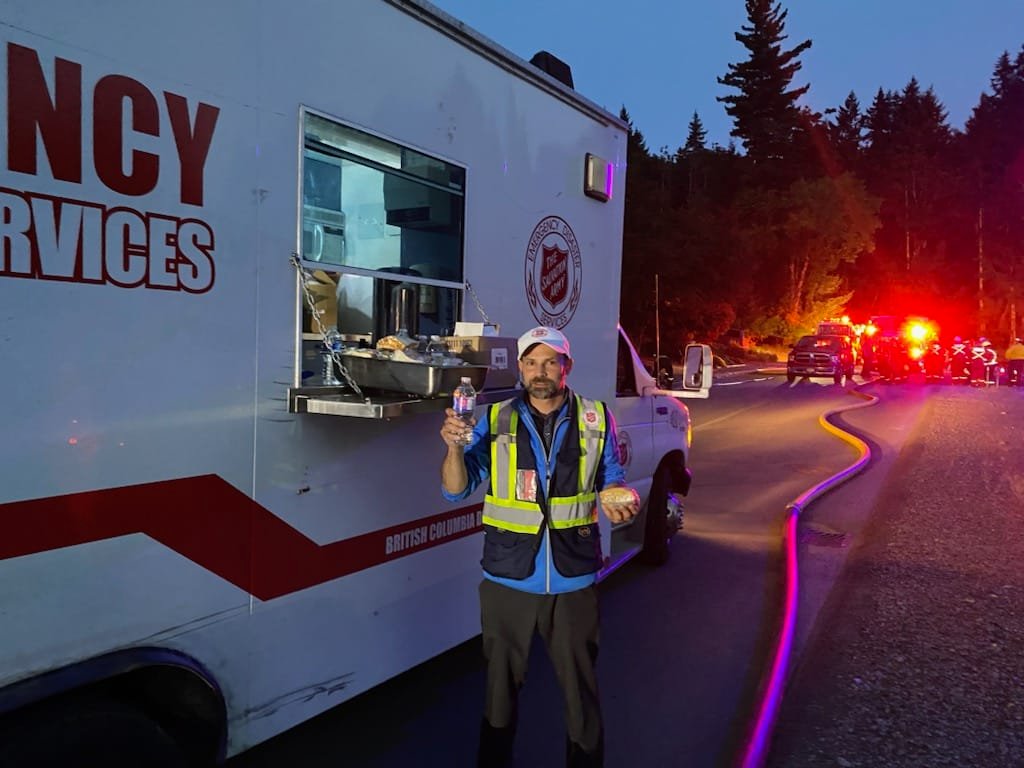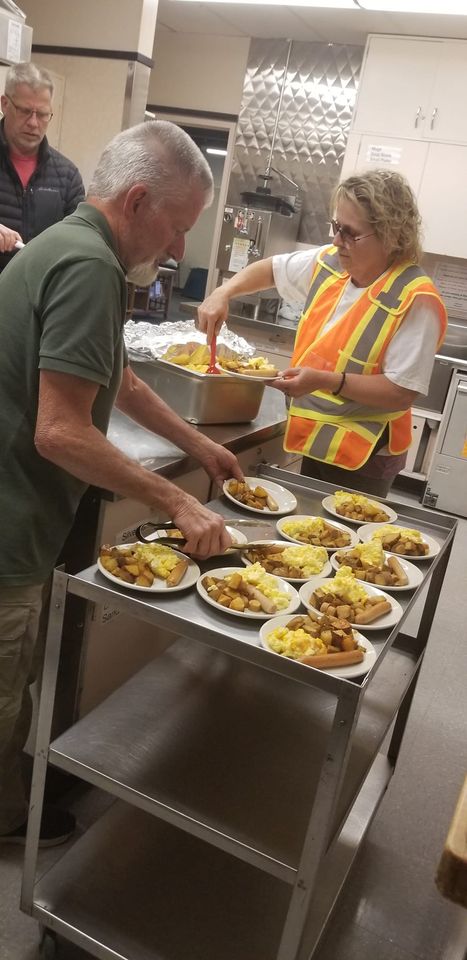This year has officially been Canada’s worst wildfire season on record, with more than 10 million hectares of land burned.
Communities from Nova Scotia to British Columbia are being displaced by wildfire danger and forced to flee their homes, compounding an already dire situation for food banks straining under historically high demand.
As the cost-of-living crisis continues to exacerbate and deepen systemic inequities, the effects of severe wildfires and other extreme weather events can push anyone into the position of having to use a food bank.
What are food banks doing to help?
Food Banks Canada’s network of 4,750 food banks and community agencies is well-versed in responding to emergency situations, with the experience of the pandemic and the impacts of the 2021 B.C. floods still fresh in the mind for many.
When spring 2023 wildfires in Alberta forced multiple communities to issue evacuation orders and thousands of people to flee their homes, Food Banks Canada worked closely with our long-standing partner, Loblaw Companies Limited, to help affected regions in the province.
Loblaw facilitated the generous donation through their distribution centres in Edmonton and Calgary, and within 24 hours they sourced non-perishable food, water, and essential hygiene products. These donations were directed to food banks in Edson, Entwistle, and Whitecourt, benefiting 200 families, 50 individuals, and 600 evacuees for multiple days.



In British Columbia, at the Alberni Valley Salvation Army Community Food Bank, the need for support skyrocketed after the highway that connects Port Alberni, Tofino and Ucluelet with the rest of Vancouver Island was closed because of wildfire and destructive debris.
“Food wasn’t able to get in and the need became significant,” Major Michael Ramsay of the Salvation Army said. “Grocery stores were empty during that time. It was a real challenge because the repurposed food that we usually get from them also wasn’t available.”
With supplies down and demand increasing, Salvation Army staff and volunteers sprang into action to help secure individual donations and serve the community when the crisis was at its worst.
“I think one of the best ways that our staff at the food bank responded was when everything was shut down, we were able to provide all of the meals for everyone who was stranded,” Ramsay said. “We’re so thankful we were able to do that.”



On the Atlantic coast in Nova Scotia, after residents in Shelburne County were forced to evacuate during a historic wildfire, the Shelburne Loyalist Food Bank got involved to support people who had lost their refrigerator, freezer, or in some cases, even their homes.
Food bank coordinator Sandra Taylor said they helped evacuees who were displaced and needed access to services by working with a local community organization to set up a free fire relief store stocked with everything from clothing to baby supplies to food gift cards. The fire relief store also supplied food to community centres that provided meal services to people in immediate need.
According to Taylor, the level of need is only getting stronger in Shelburne now that the evacuation order has been lifted.
“Most of the people who lost their homes have found someplace to stay now until their houses are rebuilt, so they could really use the food to stock their fridges because before they couldn’t, they didn’t have a house to stock,” Taylor said. “It’s now that they’ve settled in somewhere that they’re in need of more help.”
